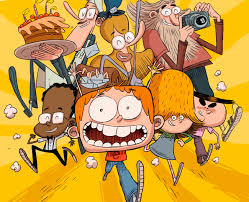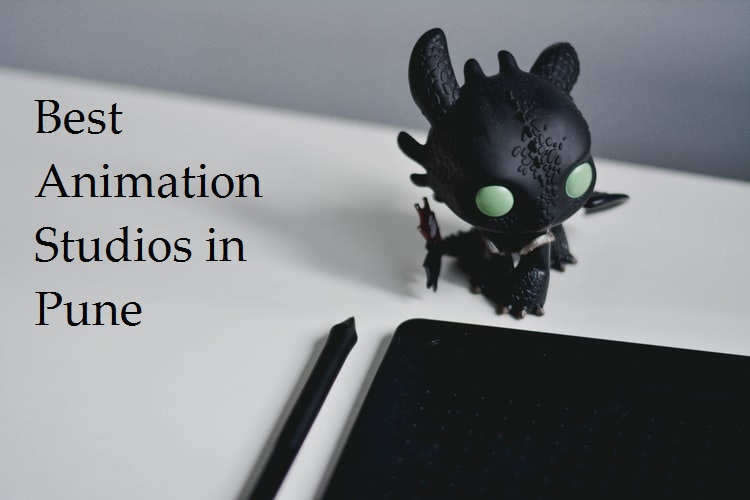To create a successful animation, from illustration talents to generating realistic movement to learning how to use animation tools. It can be challenging to get started learning how to animation for experts or beginners with ideas if you’ve never done it before.
The good news is that there are several tips, tricks, and tactics available to assist you in improving your animation skills. The animation arena is an excellent place to let your imagination run wild.
It’s a good idea because animation can make anything your mind can think of coming to life. Creating flying superheroes in live performance needs a lot of camera trickery.
However, for animators, it’s as easy as a pen stroke.
Now let us dig into some exciting tips and ideas for animations for both experts and beginners.
Squash & Stretch
The illusion of elasticity and liveliness can be created by squashing and stretching an object as it moves. It can also inform the viewer about the hardness or softness of the item.
When an opposing force compresses a thing, it is crushed, and when it is pulled on, it is stretched. Their volume, on the other hand, does not alter. If the animations look too rigid, experiment using squash and stretch to see if they improve movement.
Exaggerate Your Movement
While a lot of animation is about creating plausible movement, exaggeration is frequently what makes a good animation fantastic. The viewer may ignore too subtle actions, so consider pushing the animation outside the limitations of real movement, especially when you want to highlight something or add dramatic effect.
Exaggeration may instantly add interest to even the most meticulously realistic animations. This can be used to varying degrees, but it must not unbalance a scene or cause the viewer to become confused.
Anticipation
Consider tossing a ball: Before extending your arm forward, you pull it back. The addition of anticipation gives the spectator a sense of what’s to come and prevents your movement from seeming random. A bending before a jump or a character staring towards an object before picking it up indicates something significant is about to happen.
All Movement Has to Follow Through
Anticipation is all about how you begin your movement; execution is all about how you finish it. When an item comes to a complete halt, it does not usually do so all at once, so adding tiny motions after the main action has finished will give it a more realistic aspect. Different sections of a character rarely move at the same time.
For example, if a character is wearing a coat, the coat would continue to move and ‘follow through’ after the figure came to a halt. Similarly, if a character is running, their legs may halt before their arms, causing the main action to ‘overlap’. The two terms are very similar, and it’s tough to tell them apart.
Important Elements
The goal of staging is to draw the audience’s attention to every single significant aspect of a scene. If you’re having difficulties determining what to focus on in your animation, you may add subtle motions or other visual accents to help catch the viewer’s attention. The animation and design must be charismatic and engaging while watching.
Add Arcs
Almost nothing in nature goes in a straight line from waving your hand or moving your arm will reveal an arc, even if it’s a small one. If your animations are looking a little weird, consider doing some arcs to smooth the route of the movement. Rather than travelling in straight lines, most natural acts have a curved path.
Straight ahead vs Pose-to-pose
Different ways of animating include straight-ahead and pose-to-pose. Straight-ahead refers to constructing each new frame in order from start to finish. Pose-to-pose refers to first establishing the fundamental postures for each activity and then filling in the gaps.
One of the most crucial 2D animation tips is solid drawings. It serves as a reminder that, even if you’re representing objects in two dimensions, they must appear to be in three dimensions. Practice your 3D drawing skills as it will help a lot, and try to make sure that all the components in your animation have realistic volume, weight, and balance.
Study real movement and classic exercises
If you’re having problems finding how to make your animation appear perfect, think about what would happen in real life. You can do this by watching YouTube videos, recording yourself performing an action, or simply watching how different people, animals, and objects move.
Keep a close eye on other animations to see how they function. Simple exercises like animating a bouncing item or walking in a circle are excellent ways to learn the fundamentals and get the ideas of animations without getting bogged down in the intricacies.
Slow in & Slow out
When moving from one location to another, objects gradually accelerate (and then decelerate). Ease-in and ease-out, or simply easing, are terms used to describe these movements. The best 3D animations have a natural movement flow and a strong sense of rhythm.
Many unskilled animators have made the mistake of moving too quickly or too slowly. Don’t worry if you’re having trouble initially; odds are you’ll figure it out eventually. Your animation’s movement is determined by the timing and spacing of your frames.
shots one phrase at a time
It’s preferable to have an obvious entire body posing in your sentences over seamless transitions, especially in the beginning. Beats and phrases are used in animation, each with its purpose. One word for a situation in which a store clerk is assisting a customer could be him waving as the customer enters; another phrase could be him placing his hands in his pockets while he listens to the customer.
Treat each phrase as if it were a separate shot. Reduce your timeline to show the phrase you’re working on, and give the idea you’re animating a beginning, middle, and end. The number of frames utilized to portray an action is used to influence the speed of the action. One of the 12 principles is one of the most fundamental.
Motion graphic
Animating the shapes, images, and text, rather than characters which can be either 2D or 3D.
It is important to note that each animation style has its own set of pros and cons, which is why it is necessary to evaluate the differences between them before deciding on which you want to specialize in.
Many of the skills used in each type of animation overlap while dealing with it; many animators who are experts are adept across several disciplines. And remember, as you’re a beginner still learning the ropes, you can always change your mind later and have easily transferable skills to apply to the following specialty you try your hand at.
Pre-Production
The pre-production stage of animation is the first step in the process. The animation team crafts the story and produces the animation script with ideas and tricks during this stage, designing the characters, creating a storyboard, selecting colour palettes, preparing backgrounds, and recording the voice-over.
This is a preparation stage for the primary process; thus, it must be completed correctly. All the visual activities and storylines should be implied in a well-written script. The storyboard is based on the script, and it depicts the sequence of actions and occurrences by illustrating how they are ordered.
A lot of work creates characters, backgrounds, and other aesthetic elements.
Production
Production is now the process of putting the animation ideas together, where we did it by gathering all the previously prepared materials and putting the scenes together.
Painting the backdrops, generating specific scenes and character activities, rough animation, tidying up the animation (tracing), inbetweening, colouring, and painting the drawings with computer software, compositing, and export are all part of this process.
Animators construct an exposure sheet with all the steps for creating each scene to tie everything together. The exposure sheet is split into five sections: Timing and actions, Music and dialogues Background, Animation layers, and View viewpoint.
After creating a rough 2D animation, it must be cleaned up and polished. Tracing is another name for this procedure.
Overlapping Action and Secondary Action
Use secondary actions that bring additional life to the main action to emphasize it. Even though the characters are depicted in two-dimensional space, they must appear to have some weight to them, and they must be appealing to the audience for them to be watched. Pay attention to the characters’ movements since somebody’s parts move faster than others, and when the character pauses, other body parts continue to move.
One of the most important things to remember is planning every detail of your 2D animation tips. Consider how you want to show all the scenes and activities, which portions should be highlighted, how you want to define the primary and secondary acts, how you want to develop each character, and take notes.
Learn how to use facial expressions and body language to communicate emotions. To make a realistic animation, you must pay close attention to and analyze the gestures and body movements. Don’t be scared to go overboard and amp up the drama.
Carefully use keyframing and constructive criticism.
It’s critical to listen to constructive criticism rather than simply dismissing it. Most examples of constructive criticism aren’t meant to insult you, and pleasant counsel can be invaluable in assisting you in achieving your goals. When it comes to the animation profession or experts’ ideas, this 3D animation tip can take years to reach your desired level.
Even if you don’t get much or any favorable feedback, the folks who give it to you may simply be attempting to help you better. You might discover that the critique is solely motivated by the commentator’s personal preferences. The pose is everything in 3D animation.
Keep in mind that this animation tip is vital. Individual frames join to make a story and create movement. In any sequence, the initial and last motions are known as keyframes in 3D animation videos.
Before defining what happens, you must first construct solid and last positions for your movements. Make these stances as memorable and impactful as possible.
Animation may be found on our television screens, the internet, movie theaters, and even street billboards. But these best animation tips by viewing or making them somehow.
In this post, we’ve covered the fundamentals of creating animations, as well as 2D animations, for both novices and those looking to make animated movies for their company.
If you’re trying to make your top animation ideas, stick to the 12 basic principles of animation and some helpful hints and recommendations to help you establish your style. Select the appropriate animation software and begin creating.



